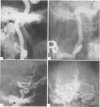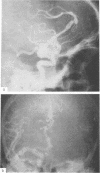Abstract
Thirty-one patients with ectasia of intracranial arteries were studied. The carotid system was more frequently involved than the vertebrobasilar. The condition is relatively rare and usually occurs with other vascular disease. Ectasia presents with a variety of neurological symptoms, amongst which visual disorders are common. The overall mortality was 52%, but the prognosis was appreciably worse for the vertebrobasilar group, probably because of a higher incidence of compression of surrounding neural structures. Defects in the internal elastic lamina, with or without associated atheroma, are often found in the affected arteries.
Full text
PDF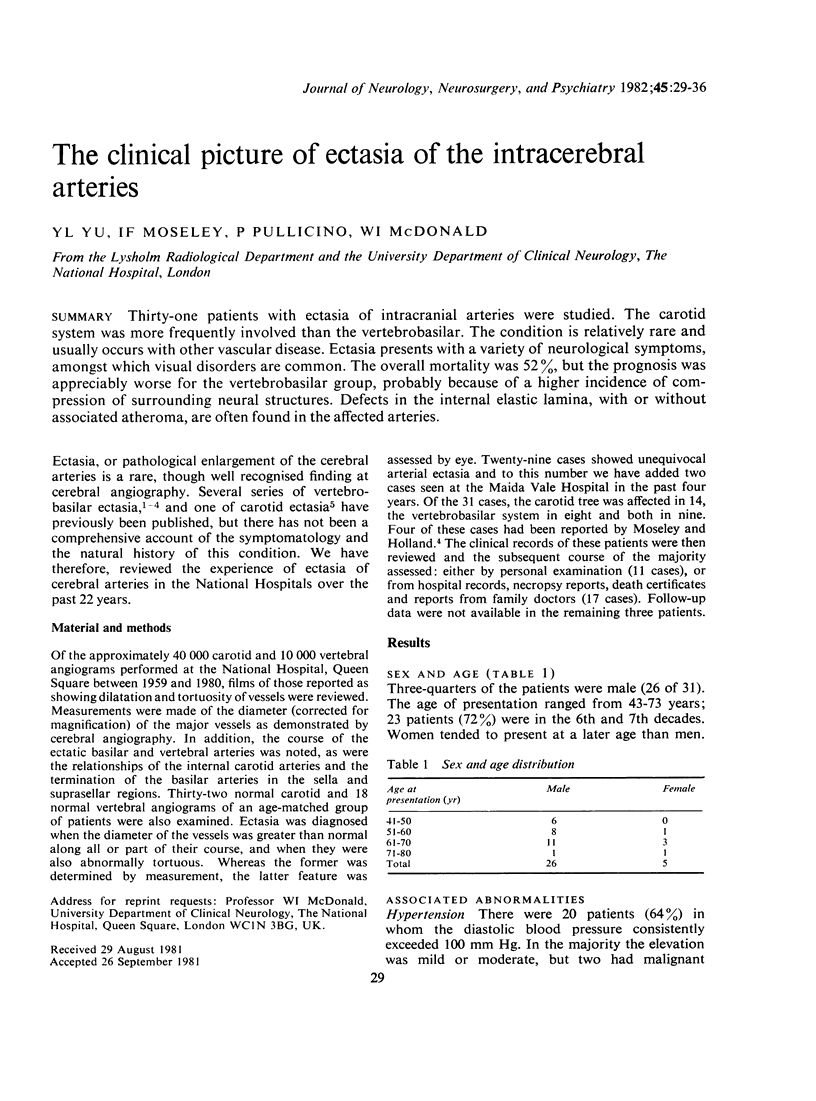
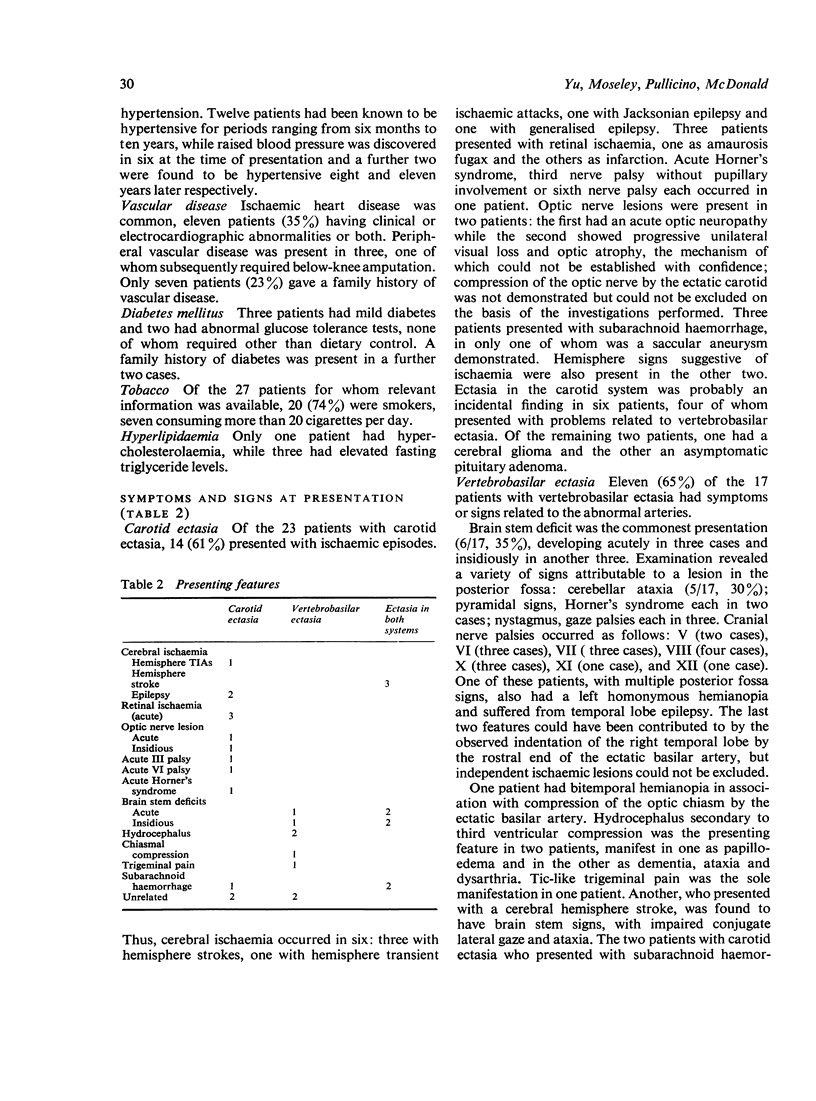
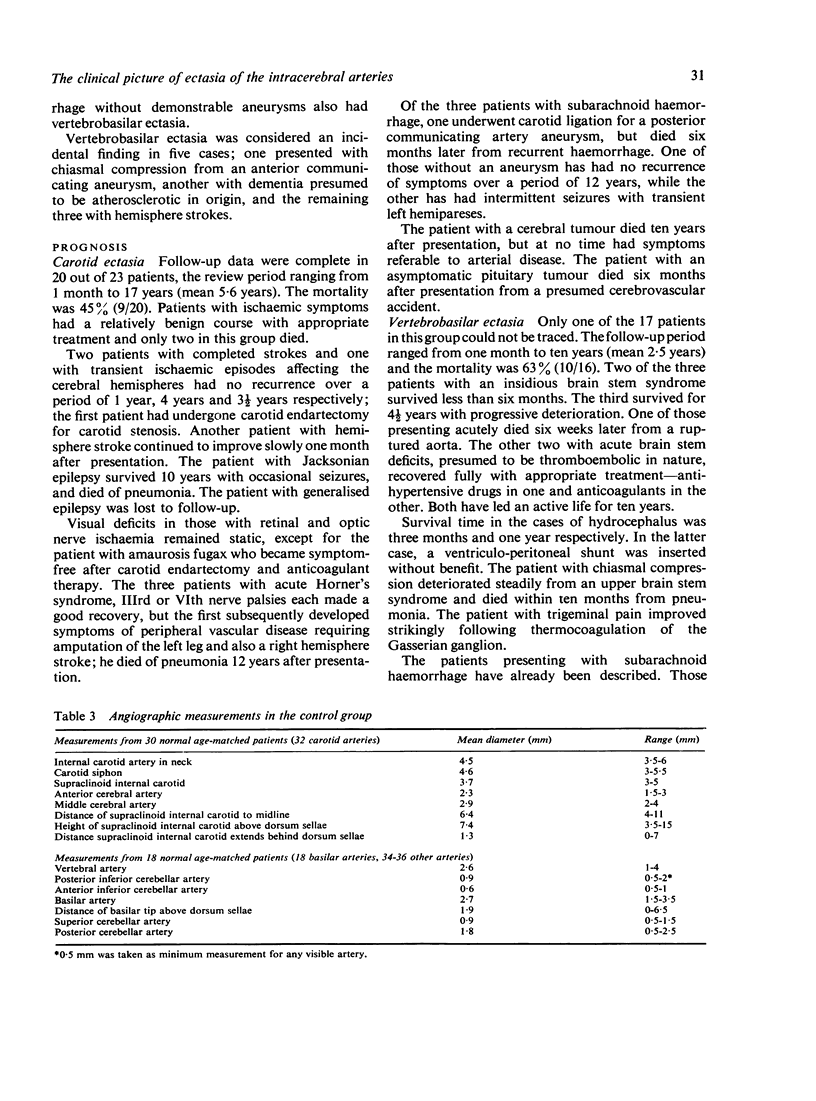
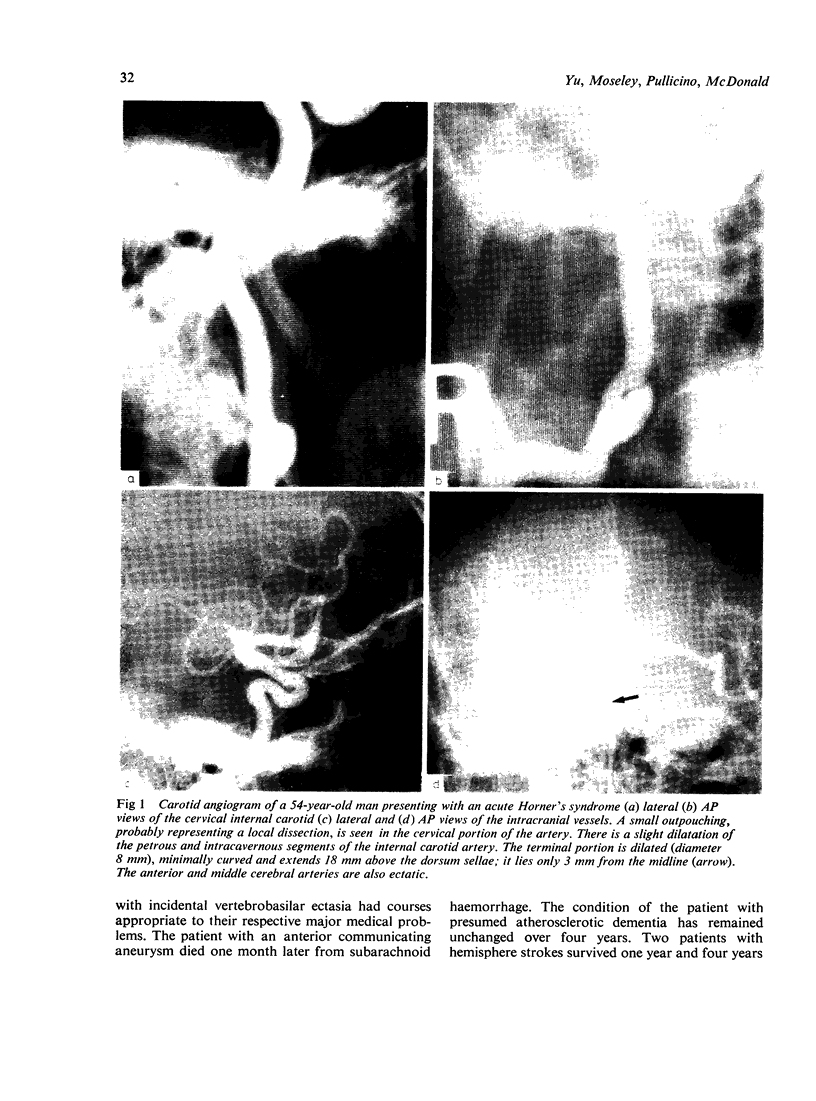
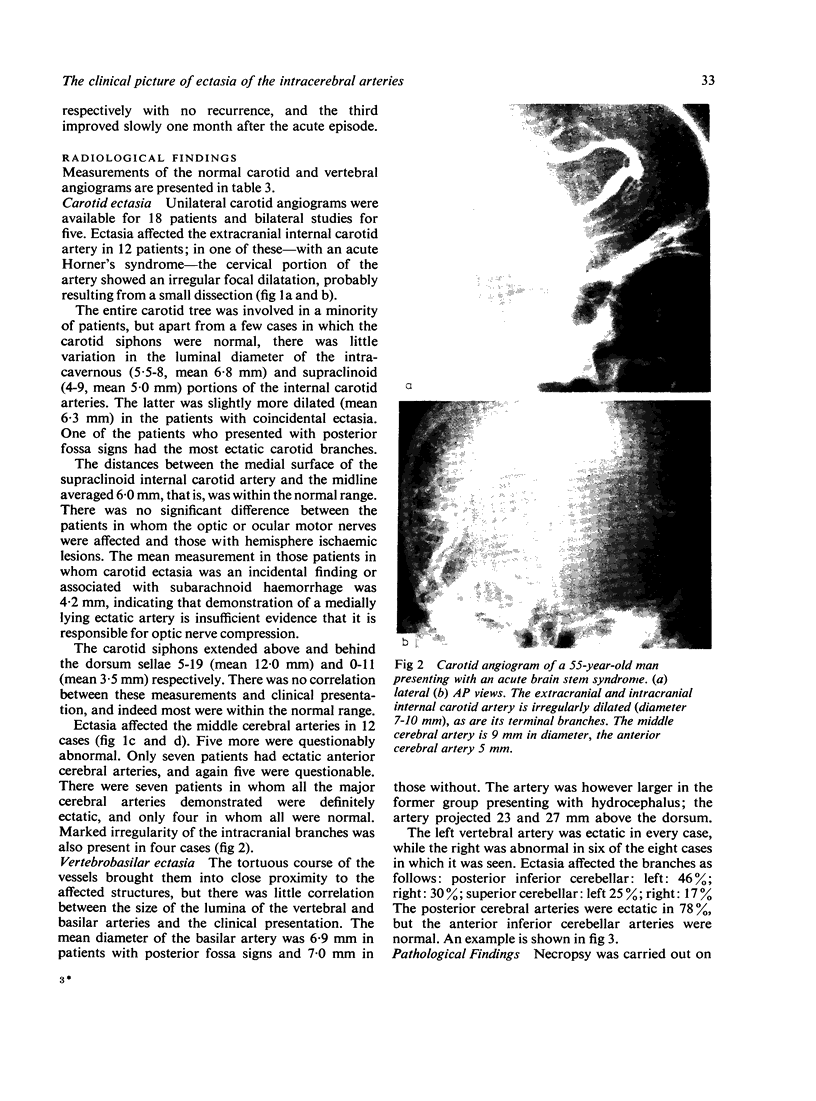
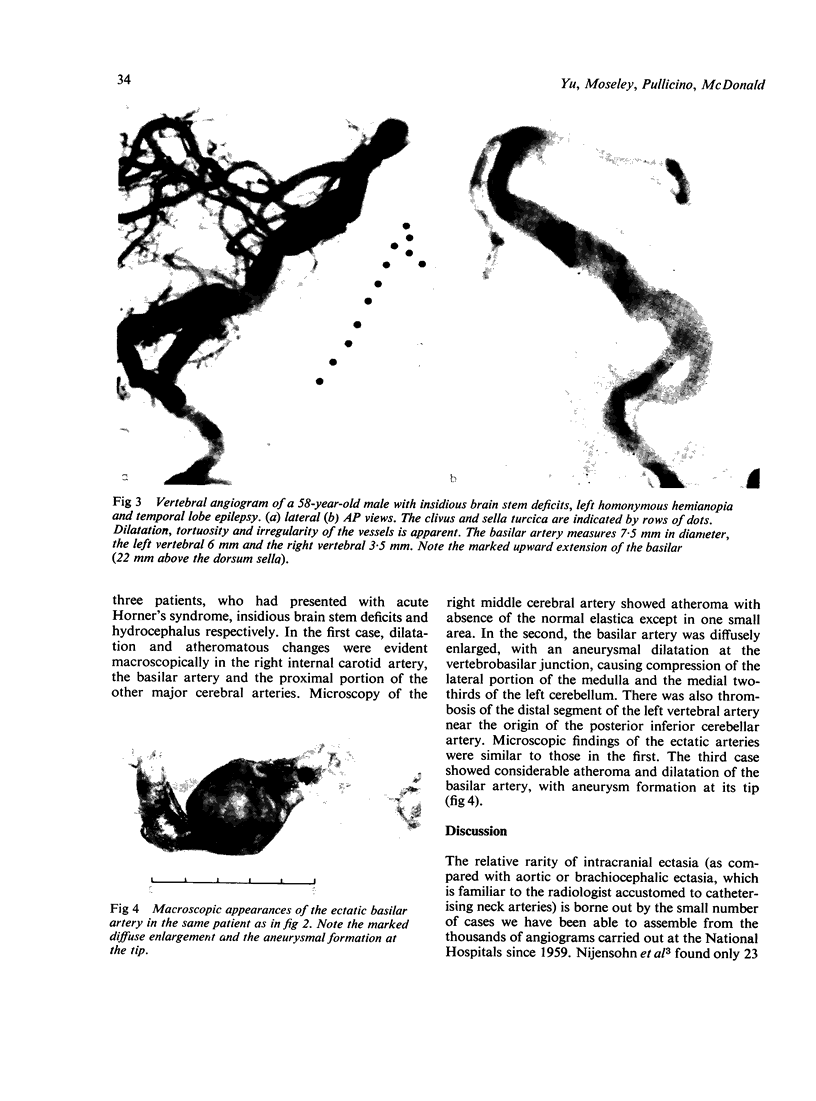
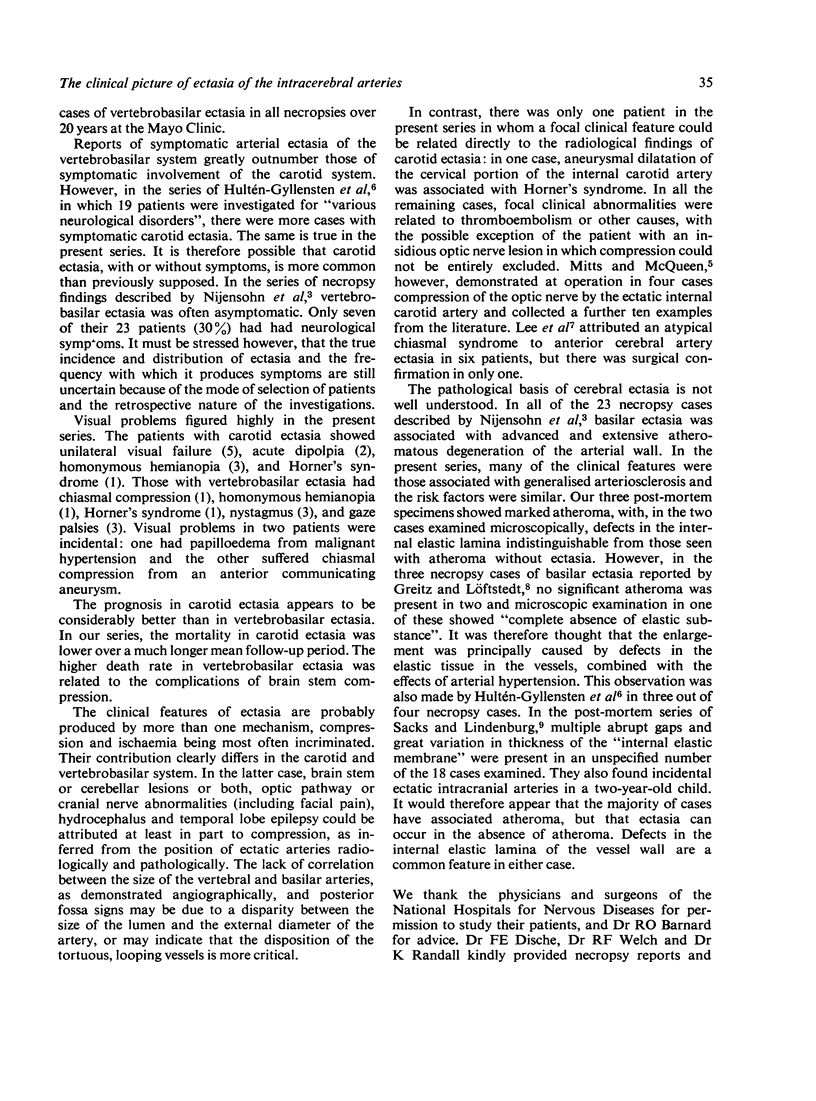
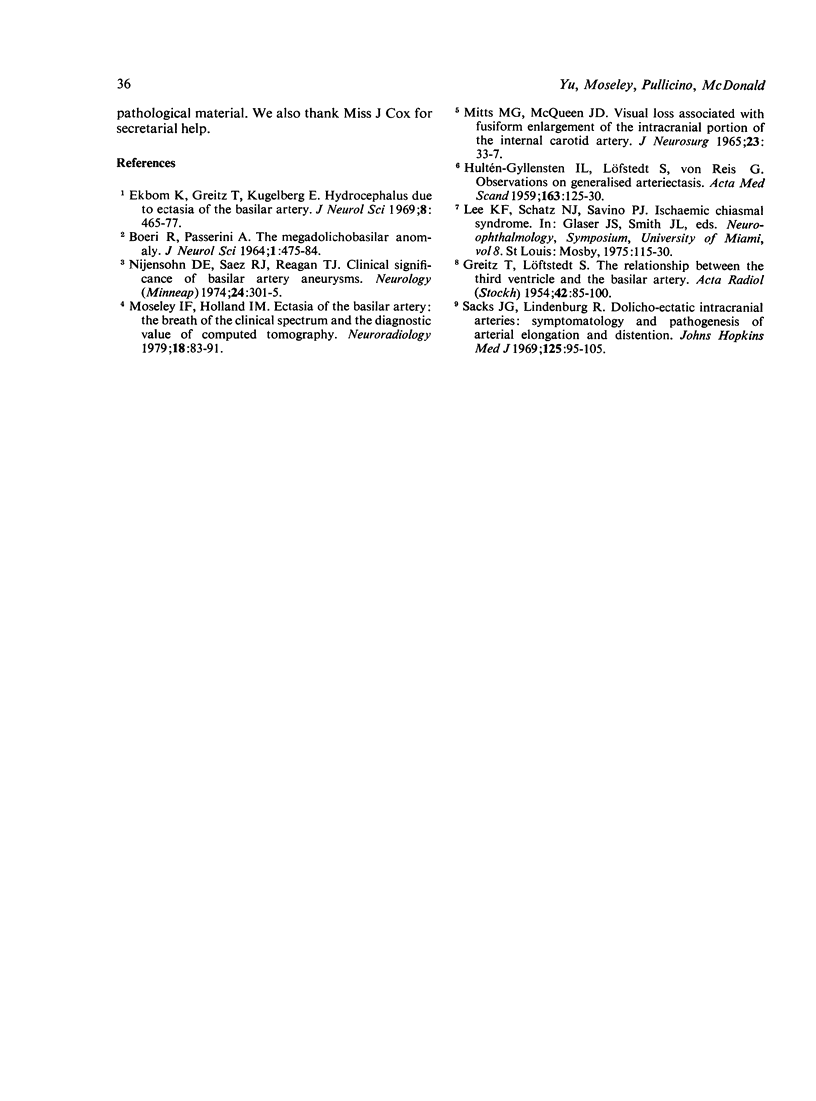
Images in this article
Selected References
These references are in PubMed. This may not be the complete list of references from this article.
- BOERI R., PASSERINI A. THE MEGADOLICHOBASILAR ANOMALY. J Neurol Sci. 1964 Sep-Oct;1(5):475–484. doi: 10.1016/0022-510x(64)90116-9. [DOI] [PubMed] [Google Scholar]
- Ekbom K., Greitz T., Kugelberg E. Hydrocephalus due to ectasia of the basilar artery. J Neurol Sci. 1969 May-Jun;8(3):465–477. doi: 10.1016/0022-510x(69)90006-9. [DOI] [PubMed] [Google Scholar]
- GREITZ T., LOFSTEDT S. The relationship between the third ventricle and the basilar artery. Acta radiol. 1954 Aug;42(2):85–100. doi: 10.3109/00016925409175100. [DOI] [PubMed] [Google Scholar]
- HULTEN-GYLLENSTEN I. L., LOFSTEDT S., VON REIS G. Observations on generalized arteriectasis. Acta Med Scand. 1959 Feb 25;163(2):125–130. doi: 10.1111/j.0954-6820.1959.tb10389.x. [DOI] [PubMed] [Google Scholar]
- Moseley I. F., Holland I. M. Ectasia of the basilar artery: the breadth of the clinical spectrum and the diagnostic value of computed tomography. Neuroradiology. 1979 Aug 15;18(2):83–91. doi: 10.1007/BF00344828. [DOI] [PubMed] [Google Scholar]
- Nijensohn D. E., Saez R. J., Reagan T. J. Clinical significance of basilar artery aneurysms. Neurology. 1974 Apr;24(4):301–305. doi: 10.1212/wnl.24.4.301. [DOI] [PubMed] [Google Scholar]
- Sacks J. G., Lindenburg R. Dolicho-ectatic intracranial arteries: symptomatology and pathogenesis of arterial elongation and distention. Johns Hopkins Med J. 1969 Aug;125(2):95–106. [PubMed] [Google Scholar]



